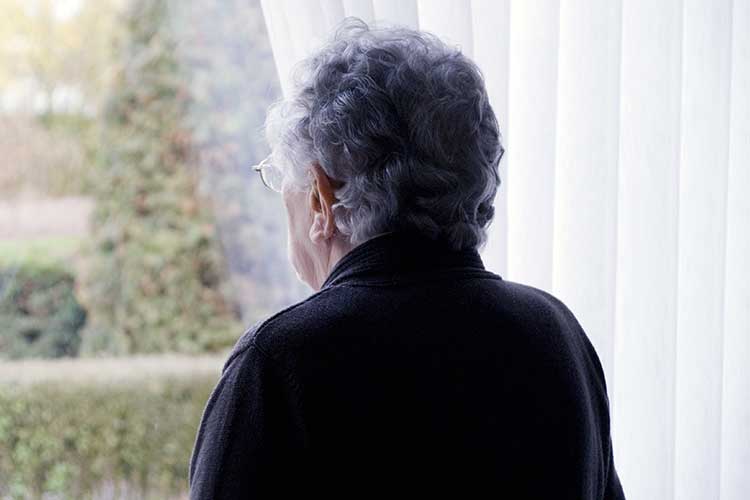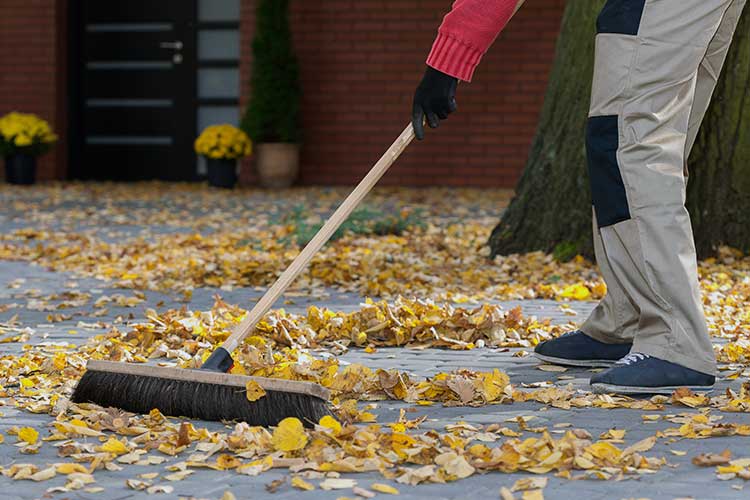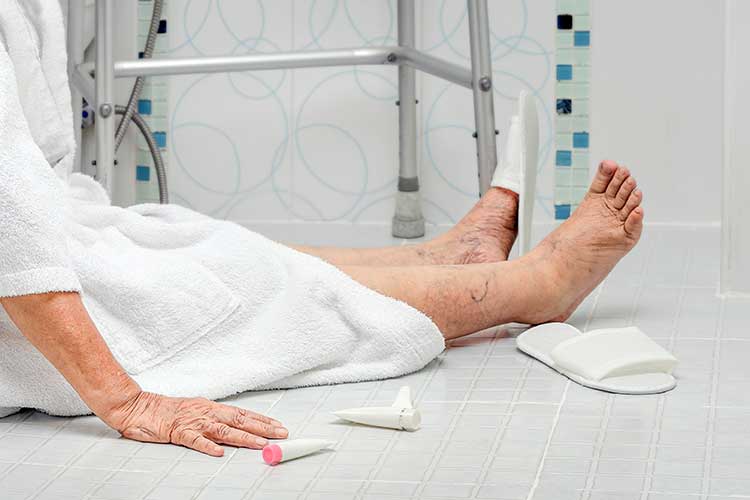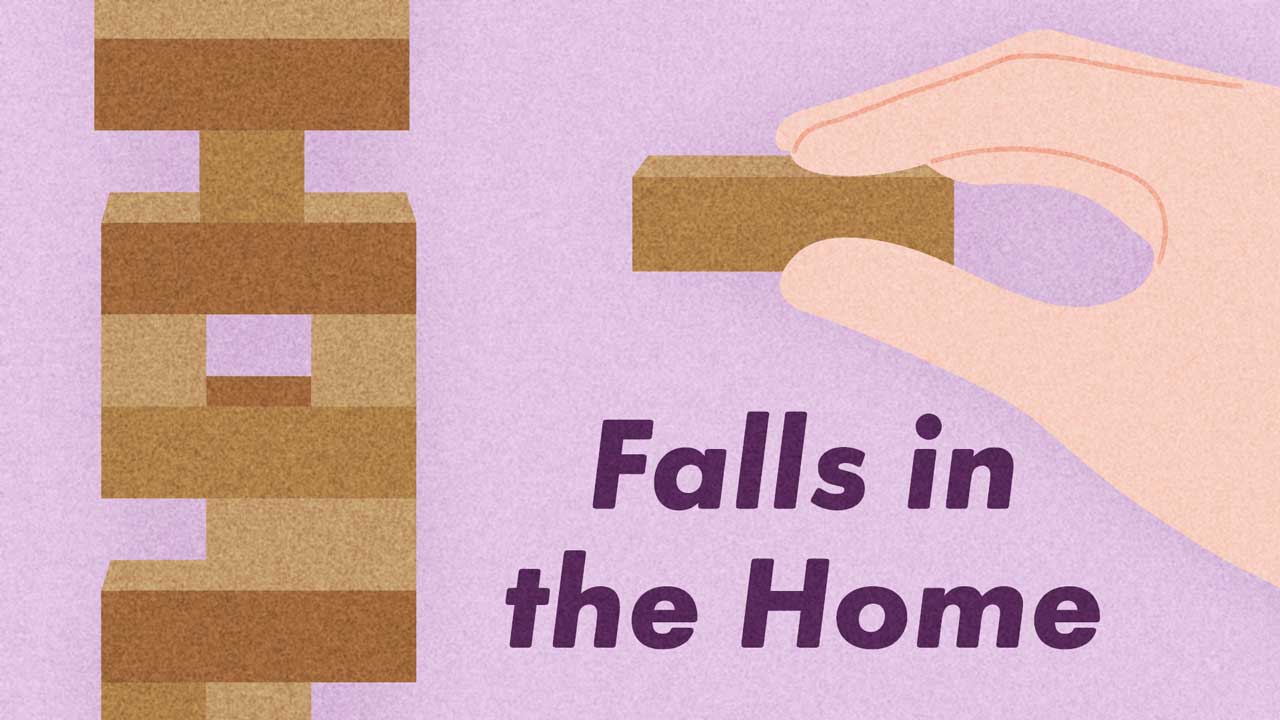Most falls are preventable.
In order to minimise falls in the home, it is important for healthcare staff to provide appropriate education to vulnerable clients and implement falls prevention strategies in the home where possible (Roo et al. 2015).
Also read: Managing Falls Risk After Discharge
Falls Risk Factors
Generally, falls occur due to a combination of both intrinsic (personal) and extrinsic (environmental) factors. The more risk factors that are present, the more likely the patient is to fall (Clay et al. 2018). Some common risk factors include:
| Intrinsic risk factors | Extrinsic risk factors |
|---|---|
|
|
(Clay et al. 2018; ACSQHC 2009; Canadian Patient Safety Institute 2015)
Older Adults and Falls
Changes to the body due to the normal ageing process can worsen existing risk factors or cause new ones to arise. Inadequate physical fitness, nutrition or hydration, and illnesses or other conditions may compound this risk further (Healthdirect 2021).
Older adults are 12 times more likely to fall than have a motor vehicle or pedestrian accident (Better Health Channel 2022). Falls are the biggest cause of unintentional injury in older adults over 65, accounting for about 75% of injury-related hospitalisations (Healthdirect 2021; Roo et al. 2015).
Overall, about one-third of older adults fall every year, with one in five of these incidents resulting in hospitalisation (Healthdirect 2021).
Risk factors for falls associated with age include:
- Balance issues and unsteadiness
- Muscle weakness and joint stiffness
- Poor eyesight
- Medication side effects
- Slower reaction time
- New health problems (e.g. incontinence or dementia).
(Healthdirect 2021; Better Health Channel 2022)
Consequences of Falling

Even in cases where an injury does not occur, the person may develop a fear of falling that reduces their confidence and independence. This, in turn, only increases their risk of falling again in the future, as reduced physical activity can lead to poor balance, muscle weakness and stiff joints (Rubenstein 2022; Healthdirect 2021).
Falls can lead to a variety of physical, emotional, social, short-term and long-term consequences, including:
- Bruises, sprained ligaments, strained muscles and other minor injuries
- Hip fracture (the most common injury caused by falls)
- Dislocations
- Broken bones
- Torn ligaments
- Deep cuts
- Organ damage
- Loss of consciousness
- Head injury
- Impaired mobility
- Social isolation
- Loss of confidence and independence
- Functional decline
- Stiff joints and weak muscles due to lack of activity
- Increased risk of future falls
- Admission into an aged care or assisted living facility
- Death.
(Rubenstein 2022; Better Health Channel 2022; Healthdirect 2021)
Preventing Falls in the Home

About two-thirds of falls occur inside the home, most commonly in outdoor areas, bathrooms, bedrooms and kitchens. Falls are more likely to occur while the person is mobilising, for example, getting out of bed, going to the toilet or using a staircase (Rubenstein 2022; Stathakis et al. 2015).
Managing falls risk requires a multifactorial approach that addresses the person’s modifiable risk factors (Clay et al. 2018).
Using a validated falls risk assessment tool, vulnerable clients should be identified and appropriate interventions should be put into place. It is likely that multiple solutions will need to be implemented in order to target several individual risk factors (Clay et al. 2018).
The following strategies may help clients minimise different risk factors around the home:
| Lighting |
|
| Slipping |
|
| Tripping |
|
| Outside Areas |
|
| Health |
|
| Sensory impairment |
|
(Healthdirect 2021; Better Health Channel 2022; Canadian Patient Safety Institute 2015; Rubenstein 2022; Mayo Clinic 2019)
Managing Falls in the Home

Clients should be informed about what to do if they are alone when a fall occurs. Remaining on the floor for a long period of time can be highly distressing and lead to complications such as:
- Dehydration
- Hypothermia
- Pneumonia
- Rhabdomyolysis
- Pressure injury.
(Rubenstein 2022)
Appropriate education should advise the client on how to get up on their own or call for help. Knowing how to manage a fall may also help to reduce fear of falling, as the client will be more confident in their ability to cope with a fall situation (Rubenstein 2022).
The specific advice given should be based on the client’s physical capacity.
Clients Who Can Independently Mobilise
The client should be advised to:
- Roll onto their stomach and get into a crawling position.
- Crawl to a stable piece of furniture (e.g. lounge chair).
- Try to get onto their knees.
- Hold onto the furniture and push upwards.
- Sit down on the furniture.
(Better Health Channel 2022)
Clients Who Are Physically Impaired
The client should be advised to:
- Crawl to a carpeted area and use clothes, a towel or anything else in reach to keep warm.
- Use their personal alarm, if they have one.
- Use a nearby object to make a loud noise to alert a neighbour (if they do not have a personal alarm).
- Keep warm and try to get up again later if they know nobody will hear them.
(Better Health Channel 2022)
Conclusion
Falls in the home can result in functional decline, reduced quality of life, loss of independence and in severe cases, even death (Rubenstein 2022).
Addressing and managing potential risk factors in the home is essential in preventing falls and their associated complications, and ensuring clients are able to maintain their confidence and independence.
Test Your Knowledge
Question 1 of 3
Mark is 70 years old and lives alone. Which one of the following activities poses the greatest falls risk?
Topics
References
- Australian Commission on Safety and Quality in Health Care 2009, Preventing Falls and Harm From Falls in Older People, Australian Government, viewed 24 August 2023, https://www.safetyandquality.gov.au/publications-and-resources/resource-library/preventing-falls-and-harm-falls-older-people-best-practice-guidelines-australian-hospitals
- Better Health Channel 2022, Preventing Falls at Home, Victoria State Government, viewed 24 August 2023, https://www.betterhealth.vic.gov.au/health/healthyliving/falls-prevention-at-home
- Canadian Patient Safety Institute 2015, Reducing Falls and Injury from Falls, Canadian Patient Safety Institute, viewed 24 August 2023, https://www.patientsafetyinstitute.ca/en/toolsResources/Documents/Interventions/Reducing%20Falls%20and%20Injury%20from%20Falls/Falls%20Getting%20Started%20Kit.pdf
- Clay, F, Yap, G & Melder, A 2018, Risk Factors for in Hospital Falls: Evidence Review, Monash Health, viewed 24 August 2023, https://monashhealth.org/wp-content/uploads/2019/01/Risk-factors-for-falls_Final-27082018.pdf
- Healthdirect 2021, Falls and the Elderly, Australian Government, viewed 24 August 2023, https://www.healthdirect.gov.au/falls
- Mayo Clinic 2022, Fall Prevention: Simple Tips to Prevent Falls, Mayo Clinic, viewed 24 August 2023, https://www.mayoclinic.org/healthy-lifestyle/healthy-aging/in-depth/fall-prevention/art-20047358
- Roo, SV, Johnston, T & Petersen, L 2015, Readmission Rates for Fall-related Injuries, Queensland Government, viewed 24 August 2023, https://www.health.qld.gov.au/__data/assets/pdf_file/0026/144782/statbite63.pdf
- Rubenstein, LZ 2022, Falls in Older People, MSD Manual, viewed 24 August 2023, https://www.msdmanuals.com/home/older-people%E2%80%99s-health-issues/falls/falls-in-older-people
- Stathakis, V, Gray, S & Berecki-Gisolf, J 2015, ‘Fall-related Injury Profile for Victorians Aged 65 Years and Older’, Hazard, viewed 24 August 2020, https://www.monash.edu/__data/assets/pdf_file/0003/455961/Monash-Uni-Hazard-Issue-80-summer.pdf
 New
New 
